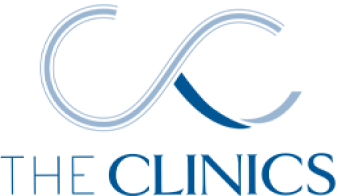
What is a Mini Facelift? Difference Between Mini Facelift & Full Facelift?
Facelift surgery isn’t just for people in their 60s anymore. A growing number of men and women in their 40s and 50s are choosing to address early signs of aging sooner rather than later with face surgery. It’s not about chasing perfection—it’s about feeling more like yourself again, before deeper lines and sagging take hold. Many of these patients aren’t looking for a major change. They just want to sharpen their jawline or fix the mild jowling they’ve started to notice. That’s when the question usually comes up: would a mini facelift be enough? Or is it better to consider a full facelift right away? Knowing the answer starts with understanding what each of these facelift procedures actually does. At The Clinics in Riyadh, we see both types of patients—those who are just beginning to notice subtle changes, and others seeking a more extensive lift. This guide was created to help you see the real differences in approach, recovery, and outcome—so you can choose what fits your goals and where you are in your aging journey.
The Mini Facelift: A Targeted Refresh for Early Signs of Aging
When the lower face starts to lose definition—usually in your 40s or early 50s—a mini facelift can help bring things back into balance. This isn’t meant to overhaul your face; it’s more like hitting the pause button before deeper sagging sets in.
The procedure focuses on the jawline and early jowling. Most people who go for it still have firm skin and only minor neck changes. That’s what makes them good candidates.
Surgical cuts are short and placed near the ears, hidden in the natural creases. Through those points, the surgeon reaches the SMAS layer underneath the skin—that’s the support structure that really lifts. Then a little excess skin is trimmed away. The result? A more defined jawline and smoother lower face, without looking “done.” And since it’s less invasive than a full, more invasive facelift, downtime is usually easier to manage.
The Full Facelift: A Comprehensive Solution for Advanced Rejuvenation
This is the procedure people ask about when the changes are no longer minor. When your jawline is soft, cheeks are heavier, folds are deep, and the neck has lost tone—it’s time to look at something more comprehensive, like a full face and necklift. The full facelift works in stages. First, your surgeon opens access through longer incisions—usually hidden around the ears and into the hairline. Then they get underneath the surface, working with the muscle layer that holds your facial shape.
This part of the face surgery matters. Just pulling the skin wouldn’t last. What creates a long-term result is lifting and reworking the deeper layer—the SMAS (Superficial Musculoaponeurotic System) is a fibro-muscular layer located beneath the skin and subcutaneous fat of the face and neck. Once that’s repositioned, the skin is gently re-draped. That’s why the outcome looks smoother, not stretched.
The recovery? A few weeks. Most people take 2-4 weeks before returning to normal routines. But the difference is clear. This isn’t just a refresh—it’s a real reversal of facial aging when done well.
Mini Facelift vs. Full Facelift: Key Differences
It really comes down to where you are in your aging journey and which of the facelift procedures is right for you. A mini facelift is usually for people dealing with early signs—mild jowls, a soft jawline, but nothing major in the neck. The skin still bounces back well. Most of these patients are in their 40s or early 50s. The cuts are shorter. They sit right around the ears, tucked into folds so they’re hard to spot later. It’s a quicker surgery, and the downtime’s easier. You’ll likely be back to work in 7-10 days.
A full facelift? That’s a bigger lift. It’s for people seeing more than one area shift—cheeks, jawline, neck. You’ll see it more in patients in their late 50s or 60s. The incisions go deeper into the hairline, sometimes behind the ears too. That gives the surgeon access to reposition the deeper muscle layer—not just skin. That’s what really brings back definition. And yes, the recovery takes longer. Most people need a good 3-4 weeks before they’re back to their full routine. Also worth noting—mini facelifts can sometimes be done with local anesthesia and sedation. A full, more invasive facelift usually needs general care.
Recovery, Week by Week: What to Expect
Healing looks a little different for everyone, but here’s a rough idea of how things usually unfold.
Mini Facelift
- Week 1: Swelling and bruising show up early, mostly around the jaw and ears. It might feel tight, but pain is usually mild. You’ll be resting more, but short walks are encouraged. Stitches often come out by the end of the week.
- Weeks 2-3: Most of the swelling fades. You’ll look and feel more like yourself. Many people go back to work or attend small social events by now. The jawline looks sharper, and early results are noticeable.
Full Facelift
- Week 1: Expect more swelling than a mini lift. The neck and cheeks may feel sore and look puffy. You’ll need to keep your head up when resting. Medication helps, but downtime is real.
- Weeks 2-4: Slow but steady progress. By week two, most people can handle light tasks. Just avoid lifting or workouts. Swelling continues to go down.
- Months 1-3: The face settles. Any remaining swelling fades gradually. Results start to look more natural. By the third month, what you see is pretty close to the final outcome.
The Consultation: Why It Matters More Than You Think
You can read every article out there and still not know which type of face surgery is right for you. That’s because no two faces age the same way. Some people notice loose skin along the jaw. Others see changes in the cheeks or neck first. And what you want to change may not match what the mirror shows.
That’s why we always start with a one-on-one consult. No pressure. No sales pitch. We’ll look closely at your face, ask the right questions, and explain exactly what a mini or full facelift could do in your case. You’ll walk out knowing where you stand—and what makes the most sense for you. At The Clinics in Riyadh, we believe planning the right surgery starts with listening first. We’re here to help you make an informed decision, not a fast one.



